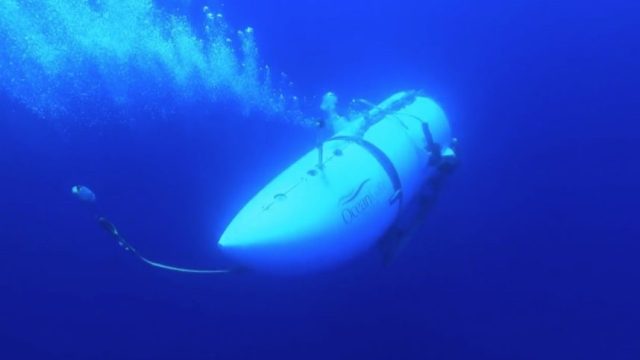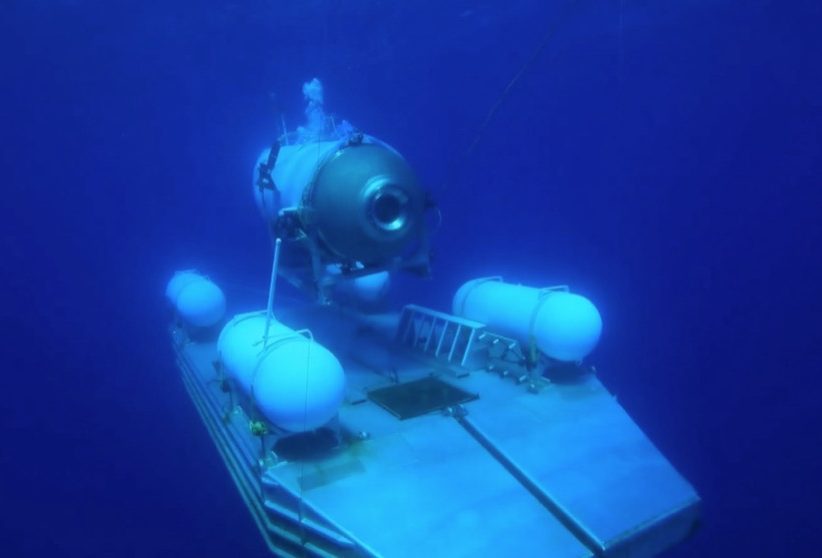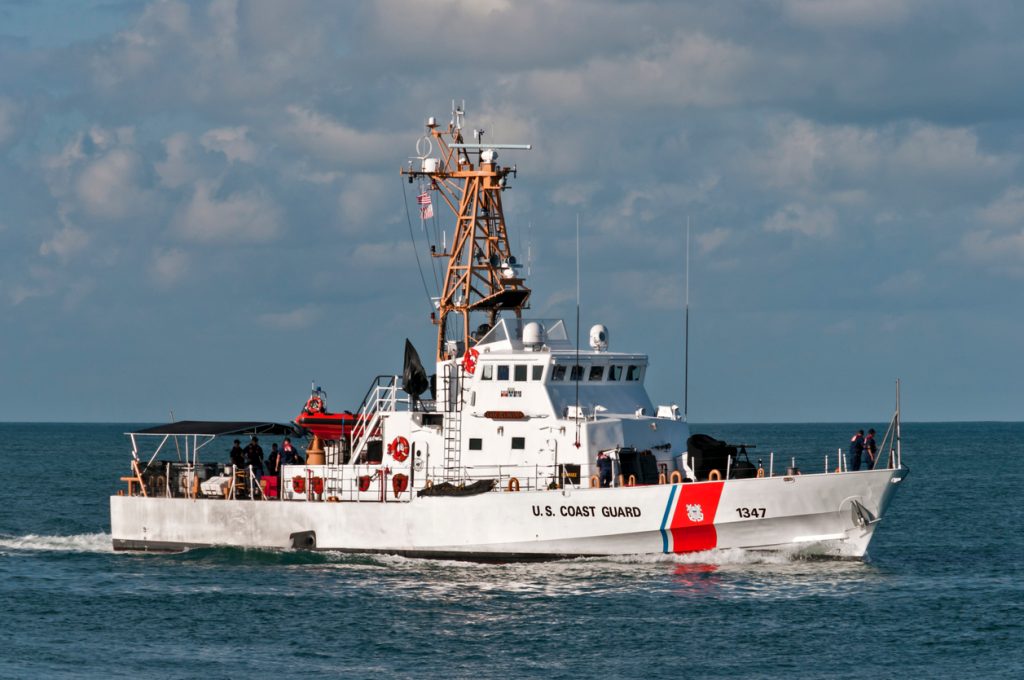Missing Titanic Submarine CEO Once Said “Safety Is Pure Waste”

Even though it occurred over a century ago, the sinking of the RMS Titanic is still a major source of historic fascination. But over the past few days, the doomed ocean liner has been in the headlines once again after a submersible on its way to the wreck site suddenly lost communications with its support ship. Canadian and U.S. authorities are now trying to locate the vessel in hopes of rescuing the five passengers on board. But as another potential tragedy unfolds, past interviews in which the submarine company’s CEO made alarming comments—including that “safety is pure waste”—are coming to light. Read on to see why some experts were concerned even before the latest emergency unfolded.
READ THIS NEXT: USPS Says Make These Changes to “Keep Carriers Safe” If You Want Your Mail Delivered.
The missing submersible was previously called out for its unorthodox design.

Since the Titan submersible went missing during an expedition on June 18, most of the focus has been on attempting to locate the vessel and save those on board. But in the process, potential warning signs about the safety of the operation have also come under scrutiny as more light is shed on its parent company, OceanGate.
In a Nov. 2022 report covering a previous expedition, CBS News reporter David Pogue was able to take part in a dive to the famous wreck site. But in preparation for the trip, he noticed some concerning language on the release paperwork he was required to sign beforehand, which claimed: “this experimental vessel has not been approved or certified by any regulatory body, and could result in physical injury, emotional trauma, or death.”
During a pre-dive tour of the submersible, Pogue also noted that it appeared to have “some elements of MacGyver jerry-riggedness.”
He pointed out to OceanGate CEO Stockton Rush that the Titan—which claims to be one of the few human-crewed vessels that can reach the crushing depths of the wreck roughly 12,500 feet below the surface—is made from simple, off-the-counter materials, including construction pipes as ballast and a video game controller that’s used to pilot the craft.
But Rush pushed back on his assertion that the vehicle was dangerous. “There are certain things that you want to be buttoned down. The pressure vessel is not MacGyver at all, because that’s where we worked with Boeing and NASA and the University of Washington,” he explained. “Everything else can fail, your thrusters can go, your lights can go. You’re still going to be safe.”
The CEO also said that “safety just is pure waste” when discussing the potential risks.

But while the CEO pushed aside any concerns about potential danger during most of the conversation, Rush also told Pogue on his Unsung Science podcast that the idea of getting to experience such dives risk-free wasn’t an option.
“You know, there’s a limit. At some point safety just is pure waste. I mean, if you just want to be safe, don’t get out of bed,” Rush said. “Don’t get in your car. Don’t do anything. At some point, you’re going to take some risk, and it really is a risk/reward question. I think I can do this just as safely by breaking the rules.”
After explaining that the Titan has several failsafe measures that should theoretically help avoid any major accidents, Rush said he did have some lingering concerns for expeditions.
“What I worry about most are things that will stop me from being able to get to the surface,” he admitted. “Overhangs, fish nets, entanglement hazards. And, that’s just a technique, piloting technique. It’s pretty clear: If it’s an overhang, don’t go under it. If there is a net, don’t go near it. So, you can avoid those if you are just slow and steady.”
Overall, Rush maintained that the operation wasn’t putting anyone at risk. “I don’t think it’s very dangerous. If you look at submersible activity over the last three decades, there hasn’t even been a major injury, let alone a fatality,” he said.
RELATED: For more up-to-date information, sign up for our daily newsletter.
The company says it chose not to have the Titan officially safety certified or classed.

But despite Rush’s claims that the company prioritized safety, OceanGate has also come under criticism for some of its operational decisions.
In a blog post on its website from Feb. 2019, the company admitted that it never had the Titan classed, which normally “assures ship owners, insurers, and regulators that vessels are designed, constructed, and inspected to accepted standards.”
However, OceanGate asserted that most marine accidents result from operator error and not mechanical problems.
“Simply focusing on classing the vessel does not address the operational risks,” the company wrote. “Maintaining high-level operational safety requires constant, committed effort and a focused corporate culture—two things that OceanGate takes very seriously and that are not assessed during classification.”
While OceanGate maintains that this allowed them to avoid bureaucratic red tape, other experts saw it as a red flag. “It suggests they were cutting corners,” Bruce H. Robison, a senior marine biologist at the Monterey Bay Aquarium Research Institute in California who has extensive experience riding in submersibles, told The New York Times.
Others agreed with the assessment. “I’ve had three people ask me about making a dive on it,” Alfred S. McLaren, a retired Navy submariner and president emeritus of the Explorers Club of New York City, told The Times of the Titan. “And I said, ‘Don’t do it.’ I wouldn’t do it in a million years.”
The Coast Guard is still running rescue operations—but time is running out.

The search for the missing vessel—which was confirmed to have Rush aboard—continues as U.S. and Canadian authorities comb the area around the Titanic wreck with specialized aircraft and boats equipped with sonar. But the operation is now a race against the clock as the U.S. Coast Guard estimated the emergency support systems on the Titan would only have enough oxygen left for the stranded passengers for 40 more hours as of Tuesday, CBS News reports.
In the early morning of June 21, Coast Guard officials reported that listening devices had picked up underwater noises near the Titanic. But while authorities hone in on their search, some experts warn of the difficult rescue operation that lies ahead.
“While the submersible might still be intact, if it is deeper than more than 200m (656 feet) there are very few vessels that can get that deep, and certainly not divers,” Alistair Greig, PhD, a professor of marine engineering from University College London, told the BBC. “The vehicles designed for navy submarine rescue certainly can’t get down to anywhere near the depth of the Titanic.”